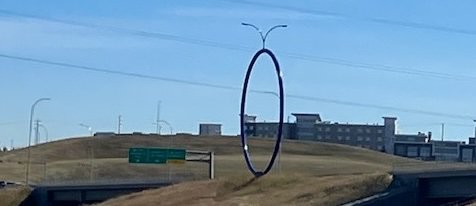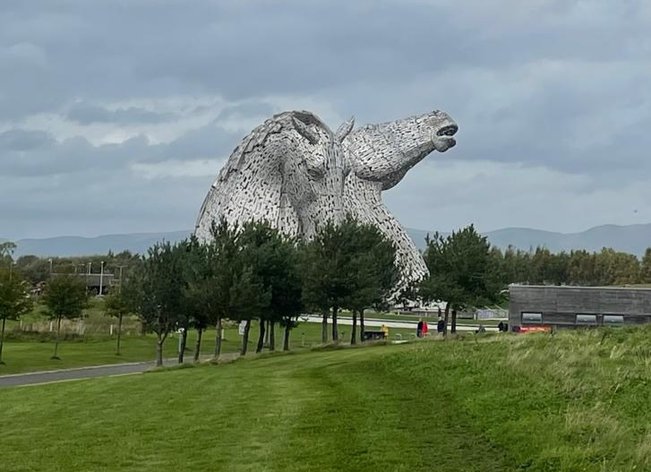“So let us pray that come it may – as come it will, for a’ that,
That sense and worth o’er all the earth, shall bear the ‘gree for a’ that.
For a’ that and a’ that, it’s coming yet for a’ that,
That Man to Man the world o’er, shall brothers be for a’ that.”
– Robert Burns, “A Man’s a Man,” 1795
Burns wrote A Man’s a Man in 1795, but in today’s world, we’re no closer to his plea for “sense and worth” and the “Brotherhood of Man” – perhaps even further away than we were 10 years ago. The world is in chaos, and the daily news is often too awful for words.
The world over, power-hungry autocrats are attempting, in their drive for ever-increasing power, wealth and influence, to impose their will on free peoples living in democracies. Weekly threats of nuclear retaliation emanate from Putin and pals for the temerity of wishing to respond to attacks on Ukraine – a neighbouring country they’ve invaded – by similarly attacking Russia.
For the preservation of a peaceful world and the promotion of peace and happiness, art has a role to play – a big role. As has music, like bringing more music into hospitals as they do in the Philippines. A recent study from the University of Vienna found that experiencing art in a museum setting not only reduces xenophobic attitudes but also increases empathy and compassion, with effects lasting up to a week. And mental health since the pandemic has become a problem; I suspect that more good public art may also have beneficial effects on civic pride and aspects of mental health.

Taking art out of the museum and into public spaces can have just as an inspiring effect as when it’s confined to art galleries. Good public art contributes to the well-being of a city, town, province or country. But it’s not easy to bring forth and doing so requires many players. As Janet Echelman, an American fibre artist who creates aerial sculptures that blend art, architecture and engineering, says: “In my regular life, I am very involved in commissions for cities and sometimes countries. And I think of public art as a team sport. The outcome is only possible with the interaction of all the players.”
In Alberta, there’s not a lot of world-class public art. We have a province to be proud of, with much natural beauty, and we have skilled artists but not much great public art, which takes determination and major funding to bring to reality. We have the giant Vegreville Pysanka (a giant Easter egg – probably the world’s biggest – created in 1975 to honour the Ukrainian communities) and big dinosaurs in Drumheller, but nothing to match the astonishing The Kelpies that I saw on a recent trip to Scotland.
However, hopefully things are happening. In Calgary, Calgary Arts Development has instigated a program of “billboard art” whereby artwork in the Calgary Arts Collection is projected onto billboards in some 20 sites around the city. A piece of art by a Calgary artist is projected for around 90 seconds and then changes to another piece of art or the usual commercial drab stuff. The billboards are placed in areas where commuters can safely take them in, perhaps calming frayed nerves on a busy commute. It’s great to see these kinds of projects promoted. However, I have to say that the billboards can be hard to find and much of the time they project the usual mind-numbing advertisements.
In Edmonton, the Edmonton Arts Council is encouraging projects like The Family Farm where paintings of farm animals are lined up and displayed. You can see murals and mixed media works in parts of the city. There are those strange giant feet at Southgate and the rotating baseball bat on the corner of 97 Street and 118 Avenue. The Crawford Block mural is a six-storey mural of a human body with the head of a dog, painted in geometric shapes. Then there was the High Level Bridge waterfall – out of order now – but hopefully soon flowing.
So what else do we have in Alberta?

Calgary has a few amusing street sculptures of businessmen bumping into each other and much excellent galleried artwork. Driving to the Calgary airport north on the Deerfoot Trail, to the west side of Highway 2 and the Calgary International Airport, you can see a large hollow “O” made of blue painted piping. When I first saw it, I thought it was some kind of radar installation but soon learned my mistake. The “O” (named Travelling Light) is one of those pieces where it’s up to the observer to decide what it is or what it represents. That can make one think, and perhaps it’s valuable as a reminder of the mystery of our existence on Earth.
It was created by a group of four German artists collectively known as “inges idee.” It is fairly controversial in old Cowtown since it cost the city $471,000. On the whole, I quite like it every time I drive north. It reminds one of the futility and silliness of much of life, and I always think of different topics as I proceed north towards Airdrie, but it’s an exaggeration to say, as it does on the City of Calgary website:
“Travelling Light is a bold and innovative artwork, intended to capture the dynamics of Calgary on the move and create a lasting impression for all who experience it. This sculptural ring is integrated into the row of existing street lamps and allows a portal into the landscape and the environs. Seen from a distance, it forms a huge window framing the expanses of the landscape, and gives the 96th Ave NE interchange a clear and unmistakable identity – both from far away and up close.”
Hardly. Maybe it transports some like that, but the majority of people I talk to – if they know about this piece – are non-committal or critical.
So on a recent visit to Scotland, I determined to see The Kelpies, an extraordinary work of public art created by the sculptor and artist, Andy Scott, a graduate of the famous Glasgow School of Art. And The Kelpies, let me tell you, are worth seeing during the day or at night. They make an interesting contrast in the scope and vision of public art in two different countries. But they also point us to an opportunity.

“Kelpies” were Scots mythical creatures living in the sea but often taking the shape of horses. The Kelpies could be dangerous and would throw anyone rash enough to try to ride them. The mythical Loch Ness Monster is another example of a Kelpie.
When the Union Canal in Scotland was built in 1880, improving trade between east and west coasts, horses were used to drag the trading barges along the canals. The horses were Clydesdales – massive, strong yet gentle creatures who toiled on farms and were widely loved by the population.
And The Kelpies of Falkirk are based on the reality of those workhorses that used to ply the Union Canal (between the Forth and Clyde estuaries) to haul boats and goods back and forth. They are a sincere wish to honour their hard work.
The Kelpies cost 10 million pounds (C$18,000,000) to put together just over a decade ago and have become a must-see visit on any tour of Scotland. They illustrate what is possible from a determined artistic community with public support. They are two massive horse heads made from steel plates shaped onsite and fixed into place on an iron framework. They took 18 months to fabricate offsite and were put together onsite in 90 days (1/8 of the time it’s taken to fix some sewer pipes on Canyon Meadows Drive in Calgary.) Yes, an astonishingly short time given what we’ve tended to expect from public construction times in Canada. The exhibit was opened in 2014.
As you drive into the area known as Helix Park, outside the town of Falkirk, Scotland, some 30 miles west of Edinburgh and not far from an ancient Roman wall – Antonine’s Wall, stretching from the Forth to the Clyde and marking the northern most limits of the old Roman Empire – you can look east over a spinney of sycamore trees and see in the distance two gigantic horse heads towering over the top of the trees. Park your car and walk towards these equine masterpieces. They mesmerize and seem to change from whichever angle you view them. Children love them, of course. In the evening sun and with night lighting, their colours change from silver to the colours of the full moon or the setting sun. The tallest equine statues in the world, they stand 100 feet high over the Forth and Clyde Canal.
Surely Alberta could do something and Calgary, the home of the Calgary Stampede, the “greatest outdoor show on earth,” should do something similar to celebrate the horse. I’d love to see a bucking bronco or a wild horse sited in the new event park, though I’d prefer two massive horses (a la The Kelpies) in the foothills on the way to the mountains to the west of the city.
On the same day that we made this visit to view The Kelpies public sculpture in Falkirk, a famous old tree was cut down at night (or rather sawn down) in Corbridge, Northumberland. It was a clean job – by someone who knew what they were doing. The tree, known as “The Sycamore Gap tree,” grew between two hillsides near another ancient Roman wall: the settlement of Corbridge along Hadrian’s Wall. It was a famous tree, 300 years old at least, and gave a lot of people – tourists and locals alike – a great deal of pleasure. It was featured in the movie Robin Hood: Prince of Thieves and was voted “England’s most loved tree” in 2016. It is hard to understand the mind of anyone motivated to indulge in that kind of idiotic vandalism. Currently, two men have been charged with criminal damage of 622,191 pounds to the famous tree and 1,144 pounds to Hadrian’s Wall, a nearly 2000-year-old monument and a UNESCO World Heritage site.
This example of organic public art – unprotected and much photographed – shows there’s a wide range in what the public considers valuable public art and what it does not, and it can be dangerous to pontificate on what is good “value” and what is not since the meaning of the artist may be hidden. The Sycamore Gap tree has been destroyed yet will rise again, slowly yet surely, though it may be scores of generations before it can be seen again in its glory.
These men have denied their involvement. Their trial is set for December 3. Whoever turns out to be the perpetrator will likely receive a fine with a few months of public service. My Singaporean friends tell me this crime would be dealt with quite differently in Singapore. I do believe public shaming is suitable for this kind of vandalism. Many of the locals would love to bring back the public stocks. This will not happen, but it does show the degree of affection and sorrow for the loss of a piece of beauty.
Now let your imagination flow. Can you imagine it? A couple of giant horses set among the foothills with the mountains in the background – one a Canadian Horse (Cheval Canadien, the National Horse of Canada) or a palomino and the other perhaps an Ojibwe Spirit horse (also known as a Lac La Croix Indigenous pony.) Surely a beautiful and effective contribution to Truth and Reconciliation that all can agree on and be proud of.
Editor’s note: The views, perspectives and opinions in this article are solely the author’s and do not necessarily represent those of the AMA.
